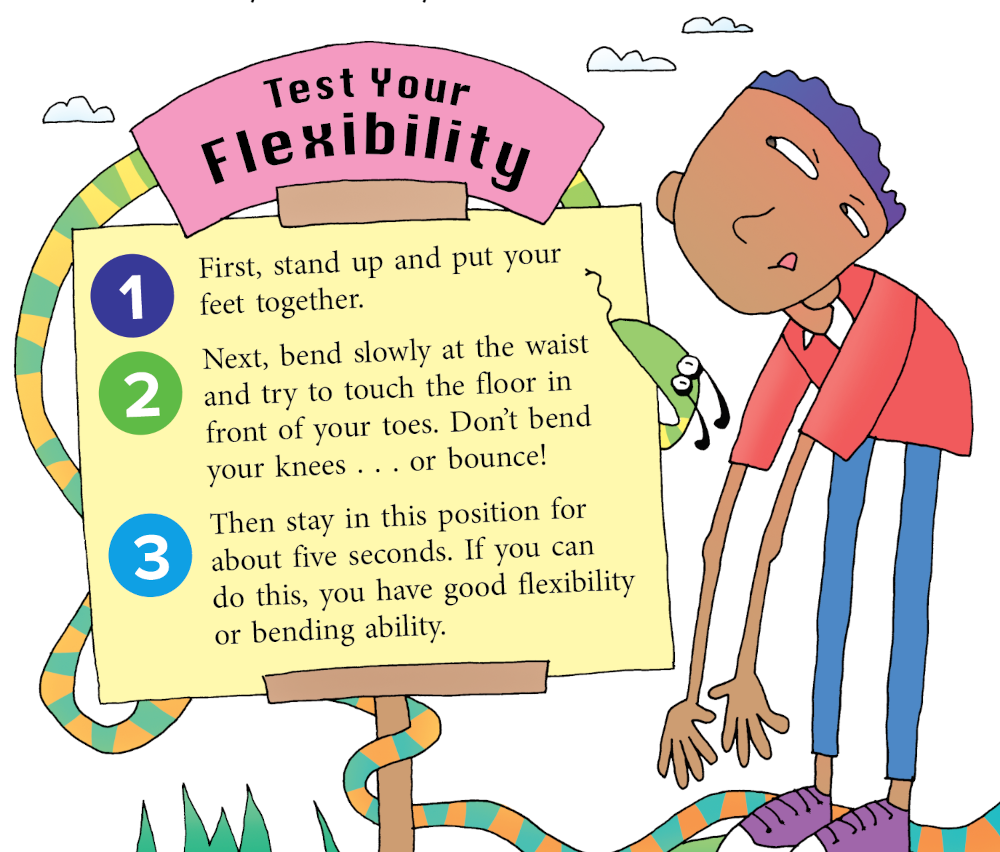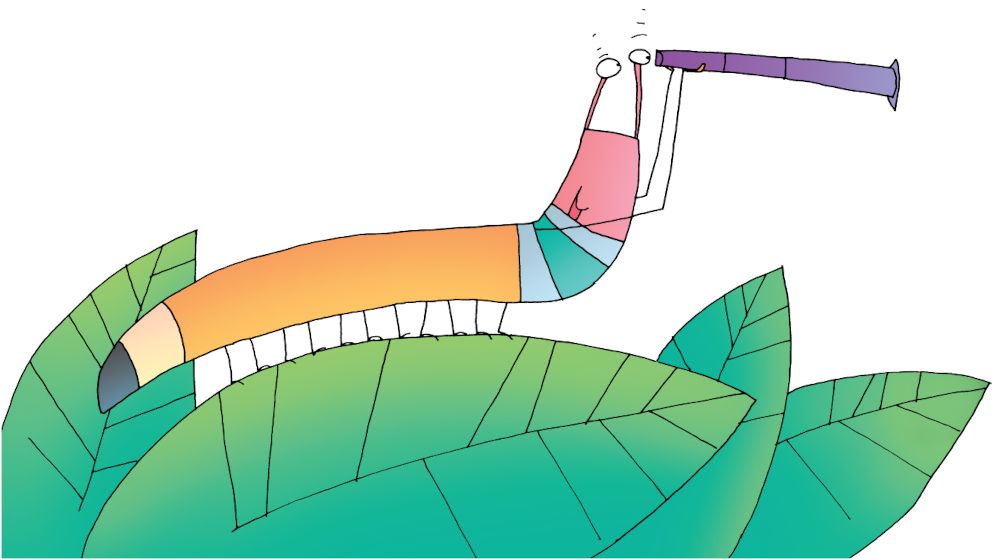WT 114
Page 114
How-To Writing
How-to writing helps you do things—bake a cake, play a game, make a butterfly hatchery, get to a birthday party, even check your flexibility! How-to writing usually gives step-by-step directions for doing something. Follow the directions below to test your flexibility.

WT 115
Page 115
Writing Directions
Prewriting
Select a Topic 🟪 What can you do? What can you make? Where do you like to go? (You can brainstorm topics using this activity.) Choose a topic to explain.
Choose a Form 🟪 Will your directions be in a list with numbers? Will they be in a paragraph? (See samples on pages 117–119.)
Writing a Draft
Create Your Directions 🟪 Number the steps in your directions, or write your directions in a paragraph.
Use Commands and Transitions 🟪 Choose effective words.
- Use command verbs like stand, put, or bend to tell readers what to do.
- Use time-order transitions like first, next, or then to help readers follow each step.
WT 116
Page 116
Revising
Review Your Directions 🟪 Ask yourself these questions:
- Are your steps or sentences clear?
- Are your steps in time order?
- Do you use commands and transitions?
- Can readers follow your directions?
Editing & Proofreading
Correct Your Directions 🟪 Fix errors in spelling and punctuation. Double-check numbers or measurements. Then write a neat final copy to share.
WT 117
Page 117
Four Kinds of Directions
1. How to Make Something
Jenny explains how to make a butterfly hatchery. Study her command verbs—punch, find, put, stand, replace, watch, and take. These words tell readers just what to do.
Making a Butterfly Hatchery
Materials: one large glass jar with lid, caterpillar, leaves, twig
- Punch holes in the lid of a glass jar.
- Find a caterpillar. (You might find one on a tomato plant, a tree, or a bush.)
- Put the caterpillar in the jar. Also put leaves from the plant you found it on in the jar.
- Stand a small twig up in the jar.
- Put the lid on the jar. Put the jar in a shady place.
- Replace the leaves every two days.
- Watch every day. (First the caterpillar stops eating. Then it spins a cocoon on the twig. Finally, the cocoon splits open, and a butterfly comes out.)
- Take the lid off. Don’t touch the butterfly. When its wings are ready, it will fly away.

WT 118
Page 118
2. How to Do Something
Susan explains how to make spaghetti. She uses words like first, then, next, and finally to let readers know the order in which to do things. This explanation is written in paragraph form.
How to Make Spaghetti
Spaghetti is easy and delicious. First, fry a pound of ground beef and drain the fat. Then boil spaghetti noodles until they are soft. Drain them in a colander. Next, add spaghetti sauce to the meat and heat. Finally, serve the meat sauce on the spaghetti.
3. How to Get Someplace
In this sample, Lewis explains how to walk from his classroom to the school library. He uses the direction words right and left as well as landmarks to make his instructions clear.
How to Get to the Library from Mrs. Davis’s Room
- Exit Mrs. Davis’s room and turn right into the hall.
- Go past the first hallway and turn left at the second.
- Pass the cafeteria on the right.
- Go to the end of the hallway and take the stairs down. (You can also take the elevator to the first floor.)
- Go through the library double doors.
- Find a book and have fun reading!
WT 119
Page 119
4. How to Have Some Fun
Writing crazy directions can be fun. Geoffrey’s sample explains how to make a robot friend.

How to Befriend a Robot
- Ask your robot to define the word friend.
—If the robot defines friend, keep going.
—If the robot defines fiend, find a different robot. - Ask what the robot likes to do.
—If the robot says, “have fun,” keep going.
—If the robot says, “world domination,” find a different robot. - Tell the robot what you like to do.
—If the robot says, “Yay!” keep going.
—If the robot says, “Boo!” find a different robot. - Hang out with your robot friend.
—If you have fun, keep going.
—If you don’t have fun, find a different robot. - Ask a good robot to be your BRFF (best robot friend forever).